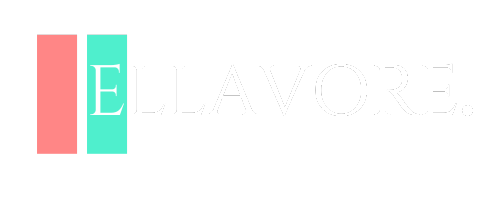How to Introduce Yourself Elegantly and Sophistically

Your introduction is your first impression and in a world that’s increasingly loud and forgettable, it’s your signature moment. How many times have you met someone and their name simply vanished from your mind the second they turned away? (Don’t worry, it happens to the best of us!).
A sophisticated introduction can be your secret weapon for building meaningful connections and making your presence truly felt.
It’s about introducing yourself the Ellavore way Classy, Composed, and Powerful. Have you ever wondered how some people just seem to effortlessly command attention and respect from the moment they say hello? You can do it too!
Whether at business meeting, a social event, or a casual gathering, here’s how to introduce yourself with sophistication.

1. Stand Tall Before You Say a Word
Why It Matters:
Before your name even leaves your lips, your posture has already introduced you. People register your body language long before they process your words. Elegant people own their space gracefully.
Studies even suggest that Good posture can boost your confidence levels.
“Your posture is your handshake before your hand ever extends.”
How to Do It Elegantly:
Having a elegant posture is a practice, not a performance. It’s a natural, upright stance that conveys confidence and ease.
A Little Self-Reflection: How often do you consciously think about your posture when you meet someone new? It might be time to tune into this silent communicator!
Your 5-Second Posture Reset Checklist:
Before you extend your hand or say your name, run through this quick mental checklist:
- Feet: Are they planted firmly and comfortably, with weight evenly distributed? (No awkward leaning!)
- Spine: Imagine a gentle lengthening from your tailbone to the crown of your head. (Think tall, not stiff.)
- Shoulders: Are they relaxed and slightly back, not hunched or tense? (Let them hang naturally.)
- Chin: Is it parallel to the floor or tilted ever-so-slightly upwards? (Avoid looking down or too haughty.)
- Overall Feeling: Do you feel grounded, open, and ready to connect? (A sense of calm presence is key.)
Practice this a few times, and it will become second nature.

2. Make Eye Contact But Gently
Why It Matters:
Strong, soft eye contact conveys confidence and warmth. It’s magnetic, not aggressive. It says: I’m here. I see you. I respect you.
“Real sophistication is felt in the gaze—it’s calm, clear, and centered.”
How to Do It Elegantly:
- Look the person in the eye as you speak and hold your elegant eye contact just a second longer than usual.
- Avoid darting eyes or constant blinking.
- Pair eye contact with a subtle smile which is calm, not cheesy.
A Little Self-Reflection: On a scale of ‘avoiding all eye contact’ to ‘intense staring contest winner,’ where do you think your natural tendency lies? Finding that gentle middle ground can be transformative.

3. Use a Warm, Clear Voice with a Calm Pace
Why It Matters:
Your voice is a reflection of your presence. Speak too fast or too soft, and you seem unsure. Speak with calm clarity, and you radiate composure.
“A refined voice doesn’t shout. It sits in the room with weight.””
How to Do It Elegantly:
- Ground Your Tone: Aim to speak from your diaphragm rather than your throat. This naturally lowers your pitch and adds resonance. Practice speaking a little lower in casual settings to get comfortable with it.
- Pace Yourself: Consciously slow down your rate of speech, especially if you tend to be a fast talker. Pauses are powerful! They give others time to process and allow your words to land with more impact.
- Enunciate Clearly: Make sure you’re forming your words distinctly. Mumbling or slurring can make you sound unsure or even careless.
- Avoid Upward Inflection: Be mindful of ending your statements with a downward or neutral inflection. An upward inflection can make even a simple introduction sound like a question.
- Project Respectfully: Ensure your volume is appropriate for the setting. You want to be easily heard without being loud or intrusive.
A Vocal Check-In: Think about the last time you introduced yourself. Were you aware of your speaking pace and tone? Sometimes, nerves can make us speed up or speak in a higher pitch without us even realizing it!

4. Master Your Core Introduction Line
Why It Matters:
The moment arrives: “It’s lovely to meet you. Tell me a little about yourself.” Do you suddenly feel like you’re on the spot, mind blank, do you freeze or fumble? Or tempted to launch into your entire life story? Elegant individuals are prepared. They don’t overshare or ramble. They have a concise, confident, and clear core introduction ready to go, leaving a positive and easily digestible snapshot of who they are. They keep it crisp, confident, and clear.
“Speak of yourself the way you’d write a fine sentence—sharp, deliberate, and polished.”
How to Do It Elegantly:
Have a 1-2 sentence version of your introduction ready. This could look like:
- “Hi, I’m Aria Kapoor. I work in brand strategy—and I’m passionate about visual storytelling.”
- “Hello, I’m Daniel Morgan. I lead investment strategy at a boutique firm, and I love connecting ideas across finance and philosophy.”
- “I’m Clara Dubois, a marketing consultant. I’ve been working on strategies to help small businesses thrive online.”
Elegant Intro Templates for Different Settings:
Here are a few adaptable templates to have in your repertoire:
- Business Setting: “Good morning/afternoon, I’m [Your Name]. I’m currently [Your Role/Company] focusing on [Your Key Area of Responsibility/Expertise].”
- Social Gathering: “Hi, I’m [Your Name]. It’s lovely to be here. I’m [Briefly mention your connection to the event or a general interest].” (e.g., “…a friend of the host,” or “…always interested in these types of discussions.”)
- Creative/Networking Event: “Hello, I’m [Your Name]. I’m a [Your Creative Profession/Area] and I’m currently exploring [A current project or passion].”
- More Casual Setting: “Hi, I’m [Your Name]. Great to meet you!” (Followed by a relevant comment about the situation, e.g., “I’m really enjoying the music.”)
- When Asked Directly “Tell me about yourself”: “[Your Name]. I [Your Profession/Key Interest] and I’m particularly interested in [A specific aspect or passion related to the context].”
Having these templates in mind will allow you to introduce yourself smoothly and elegantly in various situations.

5. Skip the Resume—Lead with Value or Curiosity
Why It Matters:
Listing your titles can sound robotic. Elegant introductions often involve a light touch of value or interest what you’re passionate about, or why you’re at the event.
“Curiosity is the classiest way to connect—it shows interest, not ego.”
How to Do It Elegantly:
- Add one elegant line:
- “I’ve been working on simplifying fashion for powerful women.”
- “I love understanding how history shapes human behavior.”
- Or add a refined question:
- “What brought you to this event?”
- “Have you always been interested in interior design?”
- “What has been the most inspiring aspect of this conference for you so far?”
- “I’m fascinated by the history of this venue. Do you know anything about it?”
- “What are you hoping to take away from today’s discussion?”

6. Use Names & Gentle Touch Strategically
Why It Matters:
Remembering and saying a person’s name makes your introduction more personal and respectful. A light handshake, a nod, or a brief shoulder touch (when appropriate) adds warmth.
“Elegance listens, remembers, and responds with warmth.”
How to Do It Elegantly:
- When they say their name, repeat it: “It’s great to meet you, Eleanor.” Make sure you actually hear it correctly the first time. Don’t be afraid to politely ask them to repeat it if you didn’t catch it.
- Offer a confident, firm-but-gentle handshake or a classy nod.
- In casual settings, a warm smile paired with a compliment (about their taste, not looks) goes a long way. For example, “That’s a beautiful scarf,” or “I’m really enjoying your insights on this topic.”
If you have difficulties remembering names, you can. As soon as you hear the name, try to link it to someone you already know with that name, a famous person, or even an object. The more vivid the association, the better.

7. Exit the Introduction Gracefully
Why It Matters:
An elegant entrance means nothing without a graceful exit. Ending a first interaction with poise leaves a lasting afterglow.
“Leave people wishing they had more of you—not less.”
How to Do It Elegantly:
- Smile and say, “It was a pleasure meeting you—hope we speak again soon.” or “Lovely to connect with you, [Their Name].
- Don’t linger too long. Move with purpose, not rush.
- If it’s a formal setting, consider offering a business card with both hands or a subtle bow.
Body Language for Exits:
- Don’t Back Away Awkwardly—Pivot with Grace: Instead of stepping directly backward, which can feel abrupt and create an awkward visual, execute a slight pivot of your body as you conclude your conversation. while maintaining eye contact and a smile until the very last moment.
- Maintain Open Posture: Even as you’re exiting, keep your shoulders relaxed and your posture open. Avoid crossing your arms or turning your back too quickly.
- A Final Nod or Smile: Offer a final nod or smile as you turn to move on, signaling the positive end of the interaction.
Bonus Section: What to Avoid During Elegant Introductions
Here are a few things that instantly dilute your sophisticated presence:
- Oversharing (“I had such a rough morning…” = unnecessary)
- Over-joking or sarcasm
- Touching your face or crossing arms defensively
- Bragging or name-dropping
- Speaking too much about yourself without curiosity
Elegance always feels composed, never desperate.
Final Thought: Your Aura Introduces You Before You Speak
How you stand, how you look into someone’s eyes, how you say your name—these tiny cues become the blueprint of your presence.
An elegant introduction doesn’t scream for attention.
It earns it! softly, steadily, with a presence people remember long after you’ve left.







4 Comments
sam
good article
ellavore.com
Thank You!!
Georgewak
Sveiki, es gribēju zināt savu cenu.
ellavore.com
Paldies par komentāru! Vai drīkstu zināt, kādu cenu jūs vēlējāties uzzināt?